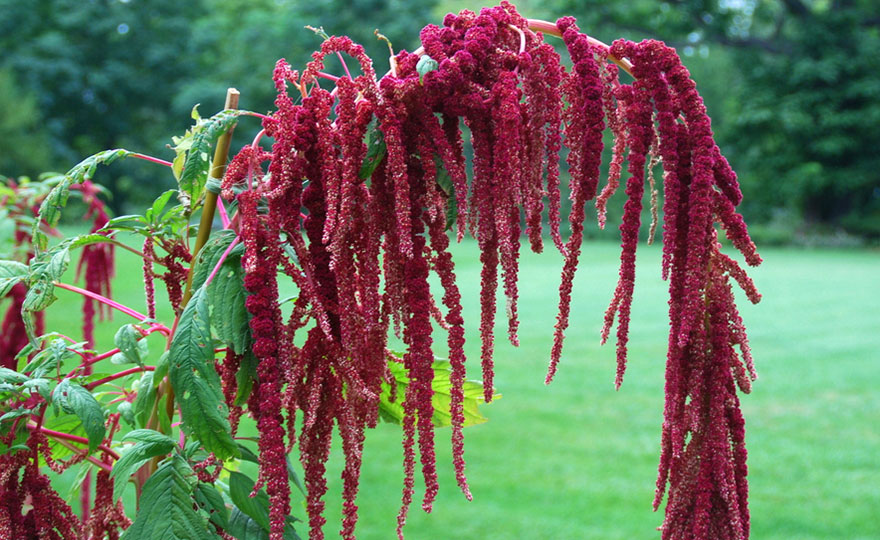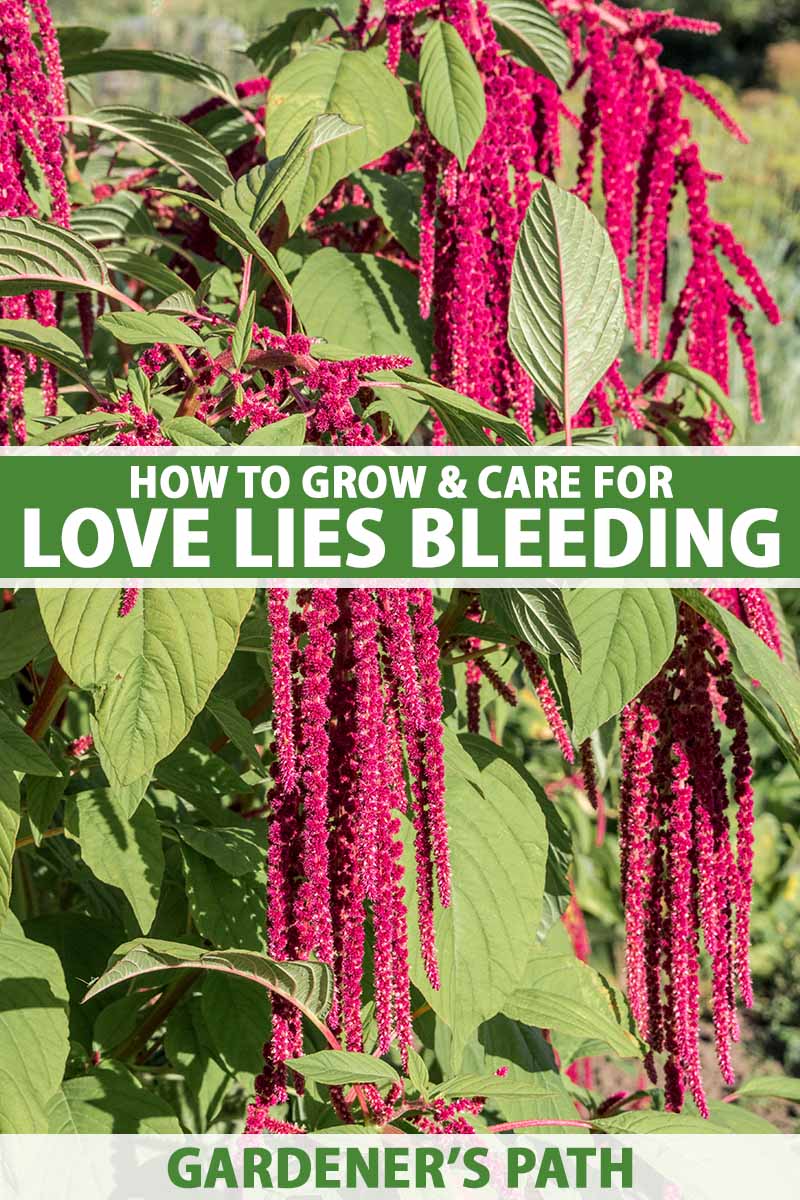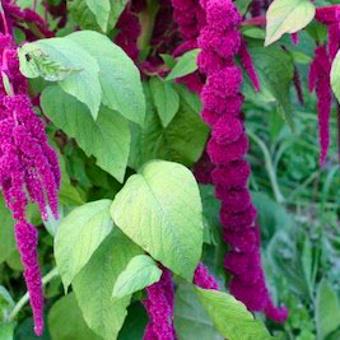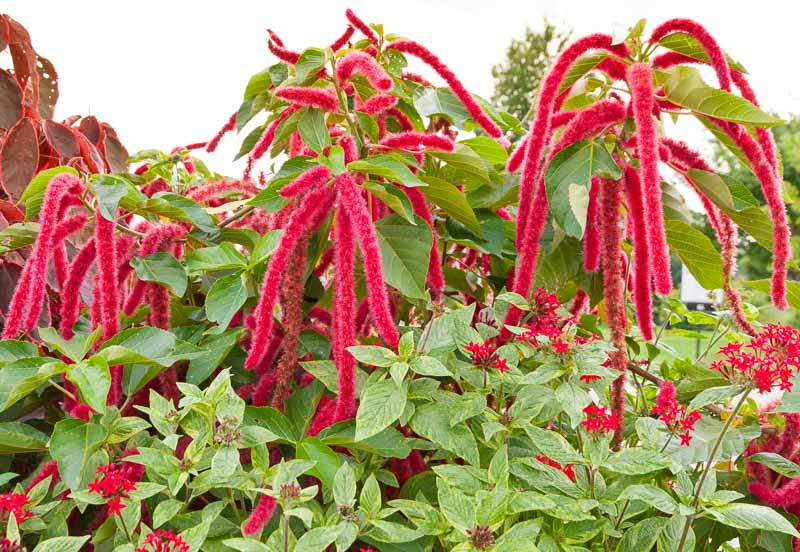Love Lies Bleeding: The Perfect Companion Plants
Love-lies-bleeding (Amaranthus caudatus) is a striking annual plant with long, drooping tassels of flowers in shades of red, pink, purple, or gold. It's a popular choice for summer gardens, and can also be grown as a cut flower.
Love-lies-bleeding is relatively easy to grow, and does best in full sun and well-drained soil. It's not too fussy about soil pH, but does prefer slightly acidic conditions. Once established, love-lies-bleeding is drought-tolerant.
Love-lies-bleeding can grow quite tall, up to 5 feet in some cases. For this reason, it's a good idea to plant it in the back of the garden, or to give it some support. It can also be grown in containers, but will need to be repotted as it grows.
Love-lies-bleeding blooms from midsummer to fall. The flowers are edible, and can be used in salads or cooked dishes. They're also a popular choice for dried flower arrangements.
If you're growing love-lies-bleeding, you may want to consider planting it with some companion plants. Companion planting is the practice of planting certain plants together for their beneficial effects on each other. Some good companion plants for love-lies-bleeding include:
- Zinnias: Zinnias and love-lies-bleeding have similar growing requirements, and they look great together in the garden. They also attract pollinators, which is beneficial for both plants.

- Sunflowers: Sunflowers are another tall, sunny plant that makes a good companion for love-lies-bleeding. They can help to shade the love-lies-bleeding's roots, which can help to prevent them from drying out.

- Dahlias: Dahlias come in a wide variety of colors, so you can find some that will complement the colors of your love-lies-bleeding plants. They also attract pollinators, and can help to deter pests.
- Celosia: Celosia is a colorful annual plant that can add a pop of brightness to your garden. It also attracts pollinators, and can help to deter pests.

- Gomphrena: Gomphrena is a low-maintenance annual plant with colorful blooms. It's a good choice for filling in empty spaces in your garden, and it can also help to attract pollinators.

These are just a few of the many companion plants that you can grow with love-lies-bleeding. By planting companion plants, you can create a more beautiful and productive garden.
Love lies bleeding (Amaranthus caudatus) is a striking annual plant with feathery, cascading red or pink blooms. It's a great choice for adding drama and color to any garden, but it's important to choose the right companion plants to complement its unique look.
Some good companion plants for love lies bleeding include:
- Sunflowers: These tall, sunny flowers will provide a nice contrast to love lies bleeding's delicate blooms.
- Zinnias: Zinnias come in a wide variety of colors, so you can choose ones that will perfectly match or complement your love lies bleeding plants.
- Cosmos: Cosmos are another great choice for adding color and interest to your garden. They're also relatively low-maintenance, so they're a good option if you're not a gardening expert.
- Celosia: Celosia is a colorful and unique-looking flower that will add a touch of tropical flair to your garden.
- Statice: Statice is a drought-tolerant plant that will add a touch of elegance to your garden.
For more information about love lies bleeding companion plants, be sure to visit Gardenia Inspiration. This website has a comprehensive list of companion plants for a variety of different types of plants, including love lies bleeding.
FAQ of love lies bleeding companion plants
Q: What are some good companion plants for love lies bleeding?
A: Love lies bleeding (Amaranthus caudatus) is a tall, showy plant that prefers full sun and well-drained soil. It can grow up to 6 feet tall and 3 feet wide, so it's important to choose companion plants that won't be overshadowed by it. Some good options include:
- Sunflowers: These tall plants will help to add height and structure to the garden. They also attract pollinators, which love lies bleeding benefits from.
- Zinnias: These colorful flowers bloom all summer long and come in a variety of colors to complement love lies bleeding.
- Cosmos: These daisy-like flowers are easy to grow and attract butterflies and other beneficial insects.
- Strawflower: This drought-tolerant plant blooms in shades of yellow, orange, and red. It's a good choice for hot, dry climates.
- Echinacea: This coneflower is known for its medicinal properties. It's also a beautiful addition to any garden, and it attracts pollinators.
Q: How far apart should I plant love lies bleeding?
A: Love lies bleeding plants need plenty of space to grow, so it's important to space them at least 18 inches apart. If you're planting them in a row, allow for at least 3 feet of space between rows.
Q: Does love lies bleeding need light to germinate?
A: Yes, love lies bleeding seeds need light to germinate. When planting them, don't cover the seeds with soil. Instead, simply press them lightly into the soil and water them well.
Q: How long does it take love lies bleeding to germinate?
A: Love lies bleeding seeds typically germinate in 7-10 days. However, it may take up to 2 weeks for them to sprout.
Q: How do I care for love lies bleeding plants?
A: Love lies bleeding plants are relatively easy to care for. They need full sun and well-drained soil. Water them regularly, especially during hot, dry weather. Love lies bleeding plants are not heavy feeders, but you can fertilize them once a month with a balanced fertilizer.
Image of love lies bleeding companion plants
- Love lies bleeding and sunflowers. Love lies bleeding and sunflowers are both tall, colorful plants that bloom in the summer. They can be planted together in a sunny garden to create a dramatic display.

- Love lies bleeding and zinnias. Love lies bleeding and zinnias are also both summer annuals that come in a variety of colors. They can be planted together in a mixed flower bed to create a colorful and cheerful display.
- Love lies bleeding and cosmos. Love lies bleeding and cosmos are both airy and delicate plants that bloom in the summer. They can be planted together in a cottage garden to create a romantic and whimsical look.

- Love lies bleeding and ornamental grasses. Love lies bleeding can also be planted with ornamental grasses to create a tall and graceful display. Some good options for ornamental grasses to plant with love lies bleeding include fountain grass, miscanthus, and pampas grass.

- Love lies bleeding and marigolds. Love lies bleeding and marigolds are both annuals that attract butterflies and other pollinators. They can be planted together in a pollinator garden to create a haven for these important insects.


Post a Comment for "Love Lies Bleeding: The Perfect Companion Plants"